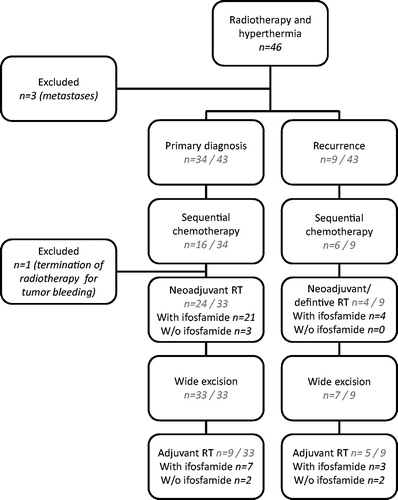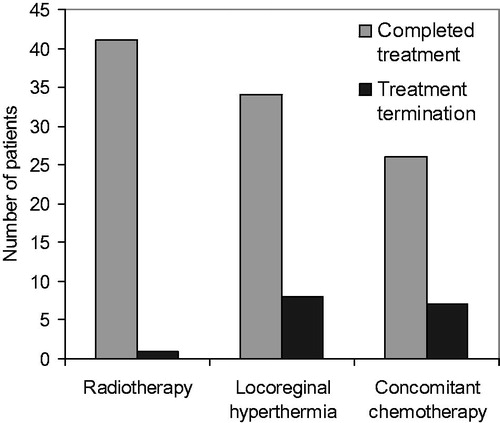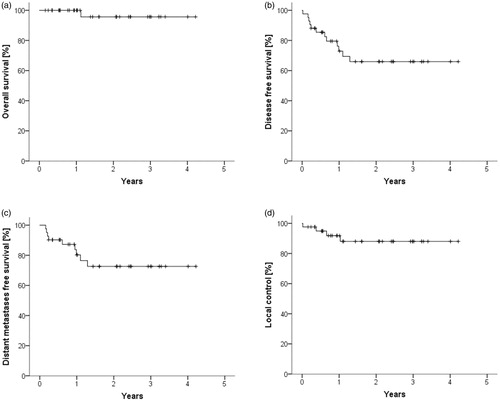Figures & data
Table 1. Patient characteristics of the whole cohort of 42 patients, nine were treated for isolated local recurrences after surgery alone.
Figure 1. Schematic overview of the treatment in the cohorts of patients treated for local recurrences after surgery alone and patients treated multimodally at primary diagnosis, as well as patients screened but not eligible for the analysis.

Table 2. Treatment characteristics of the whole cohort.
Figure 2. Multimodal treatment with radiotherapy and hyperthermia complemented with concomitant chemotherapy in 33 patients. Radiotherapy was completed in all but one patient. 34 of 42 patients underwent eight or more hyperthermia treatments twice weekly. 26 of 33 patients completed the full two cycles of concomitant chemotherapy with ifosfamide.

Table 3. Indirect MR-thermometry data were evaluated for four patients in the neoadjuvant setting.
Figure 3. Estimated overall survival (a), disease free survival (b), distant metastases free survival (c) and local control (d) are shown after a median follow up of 1.4 years.

Figure 4. Resection status did not influence local control (a). Adjuvant treatment in comparison to preoperative irradiation led to worse estimated local control with a trend to statistical significance (b). The most significant factor influencing local control was the treatment of local recurrences after surgery only in comparison to multimodal treatment at primary diagnosis (c). Multivariate analysis did not reveal independent prognostic factors among resection status, adjuvant vs. neoadjuvant treatment or treatment or recurrences.

Table 4. Comparison of known prognostic factors in the cohort of patients treated for local recurrences after surgery alone vs. patients treated multimodally at primary diagnosis.
